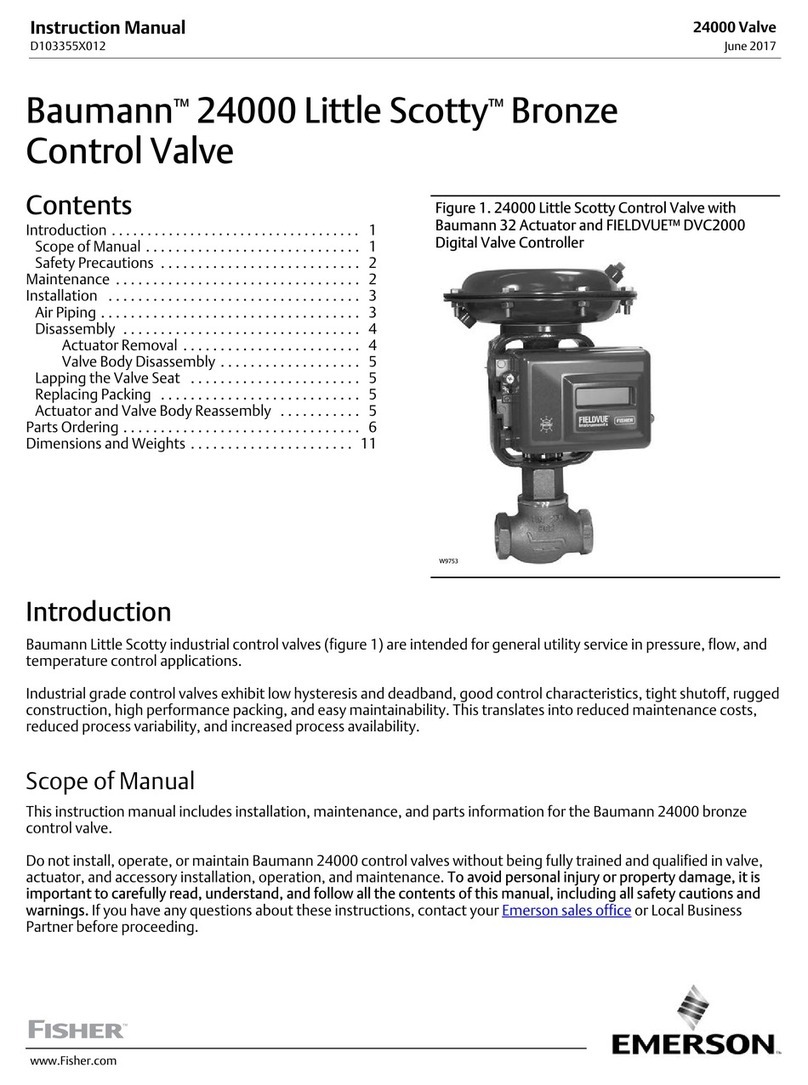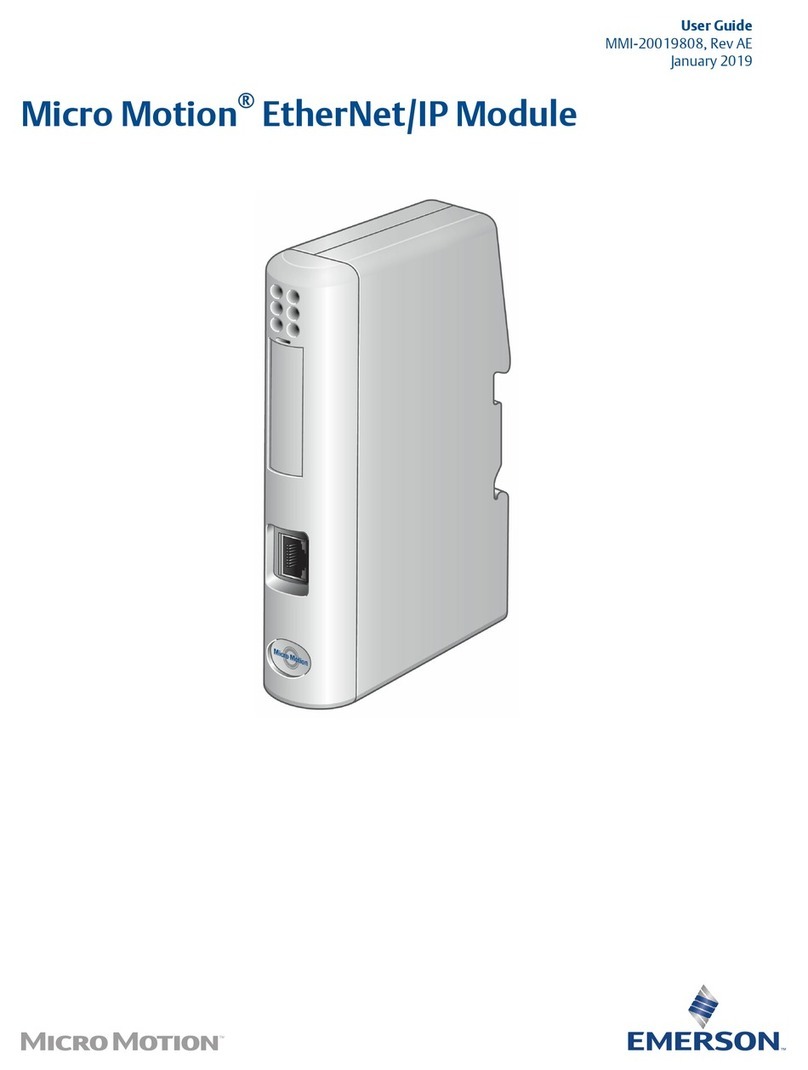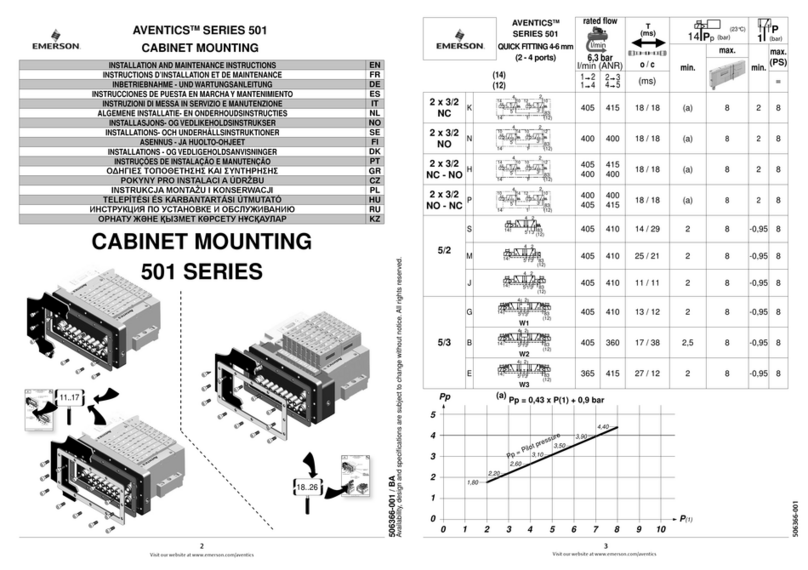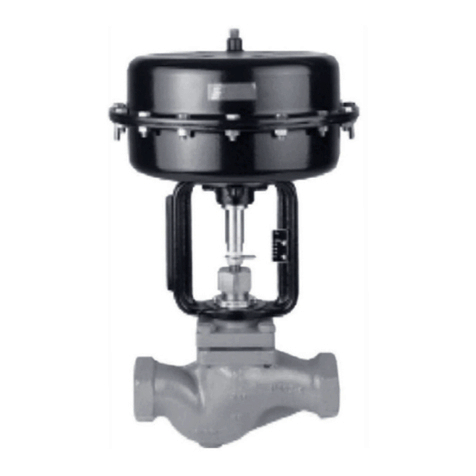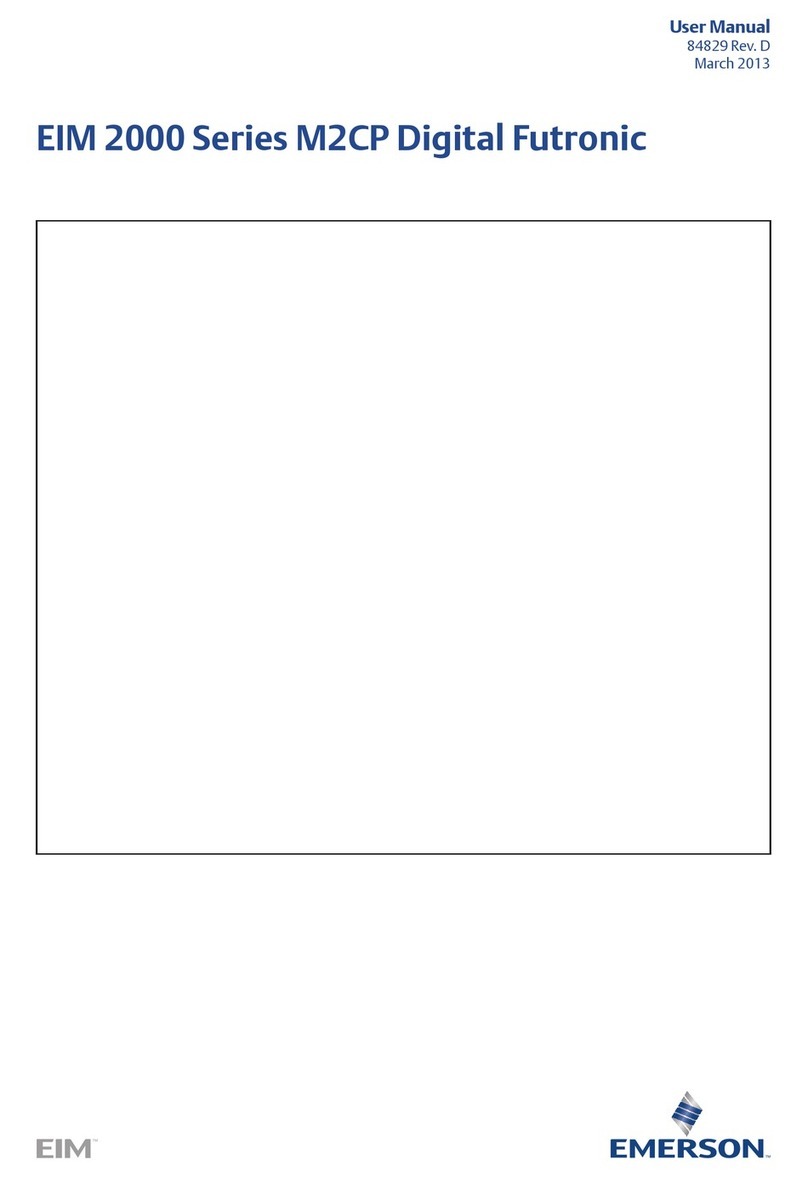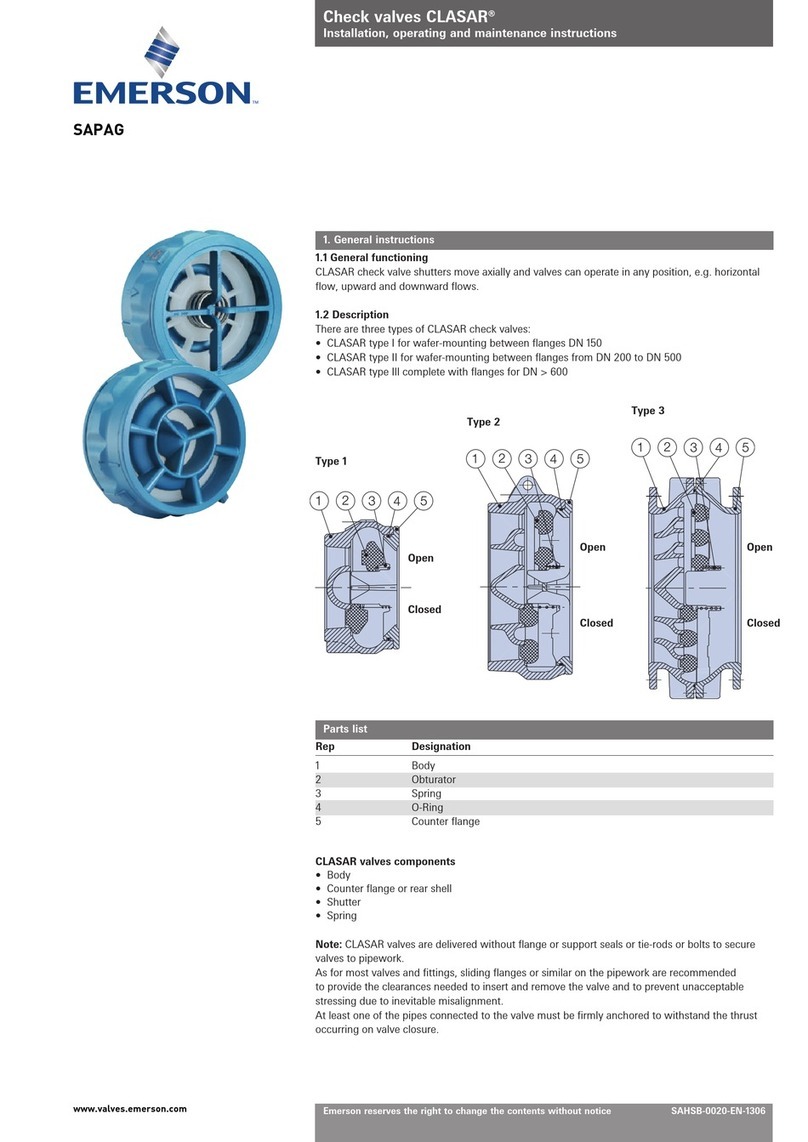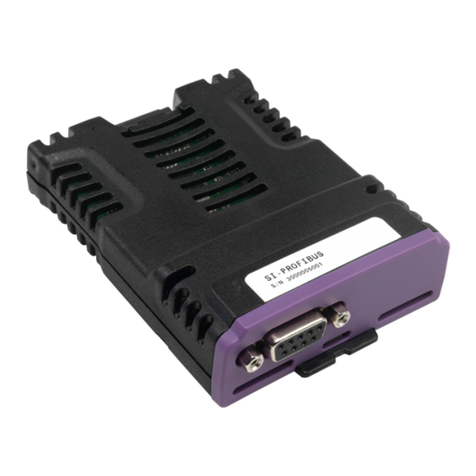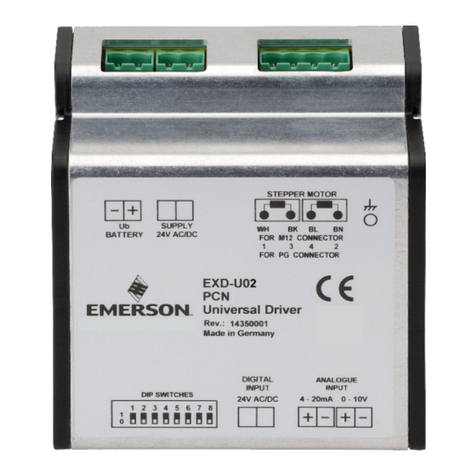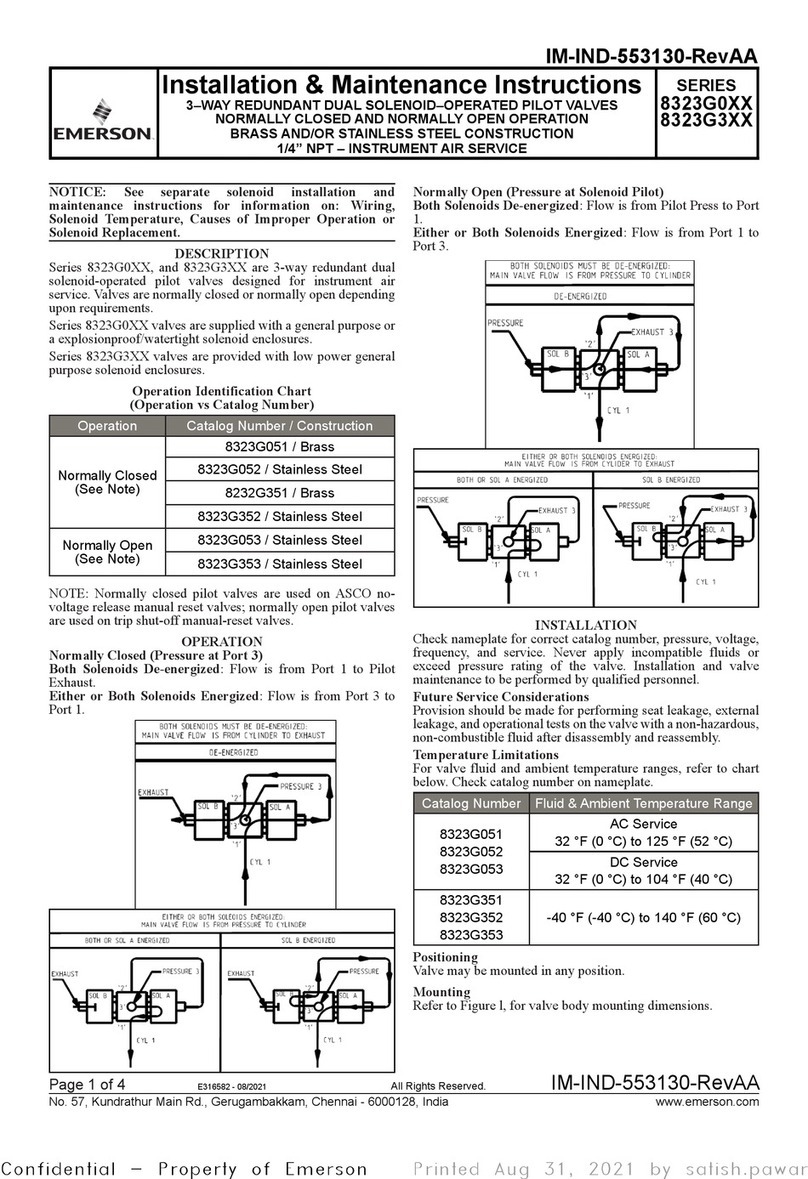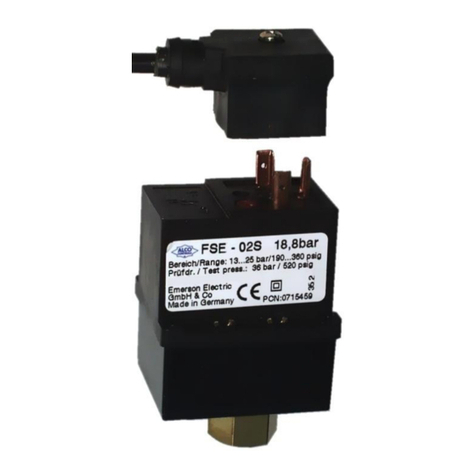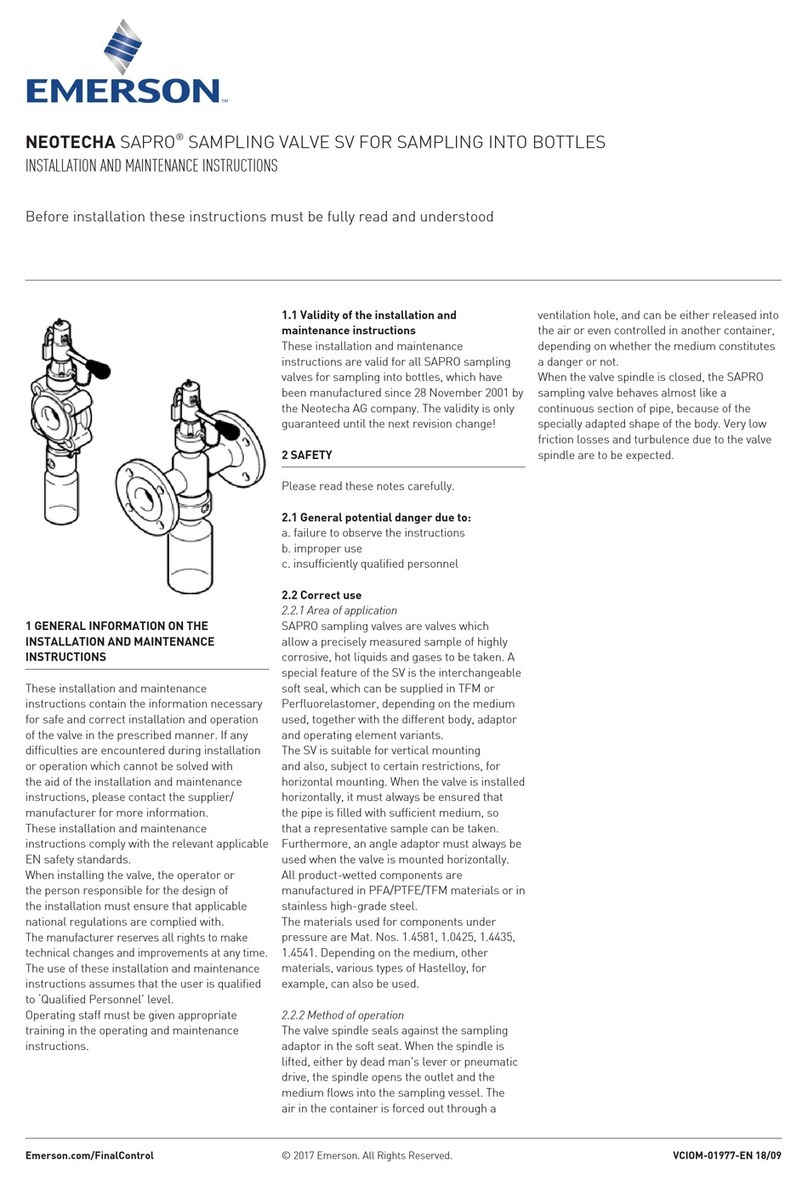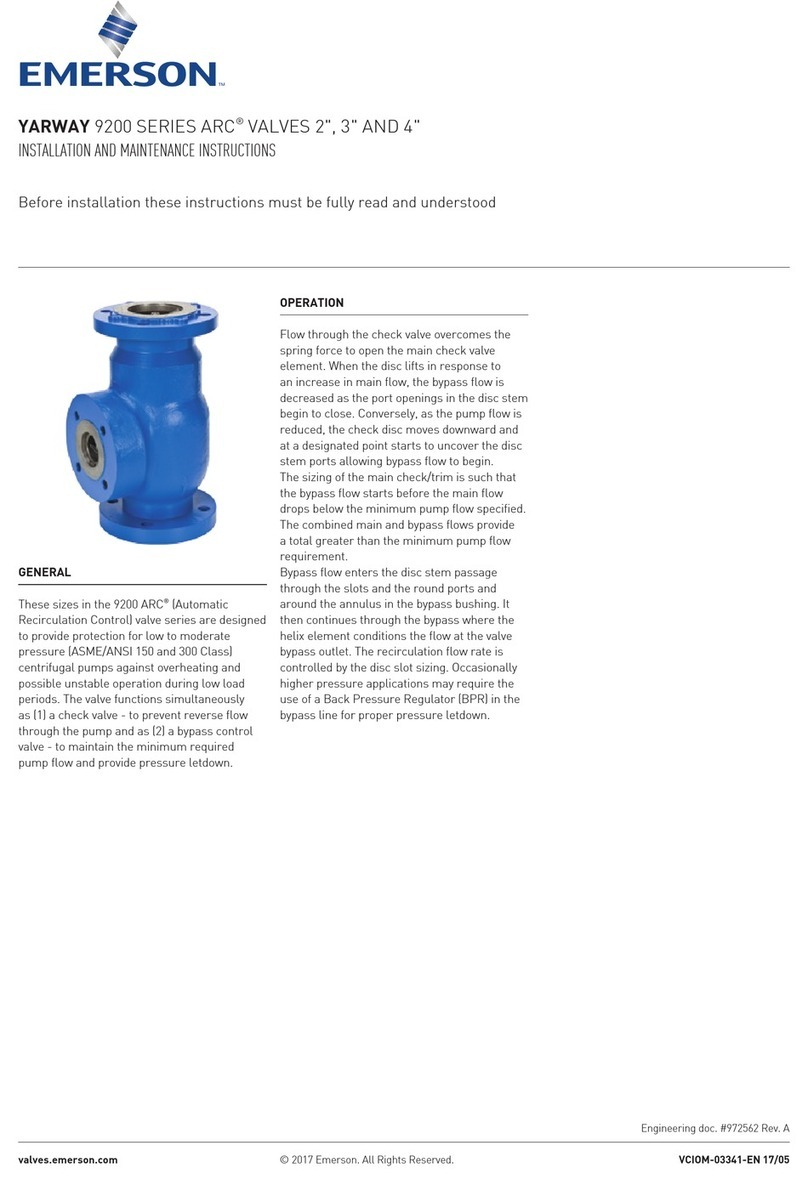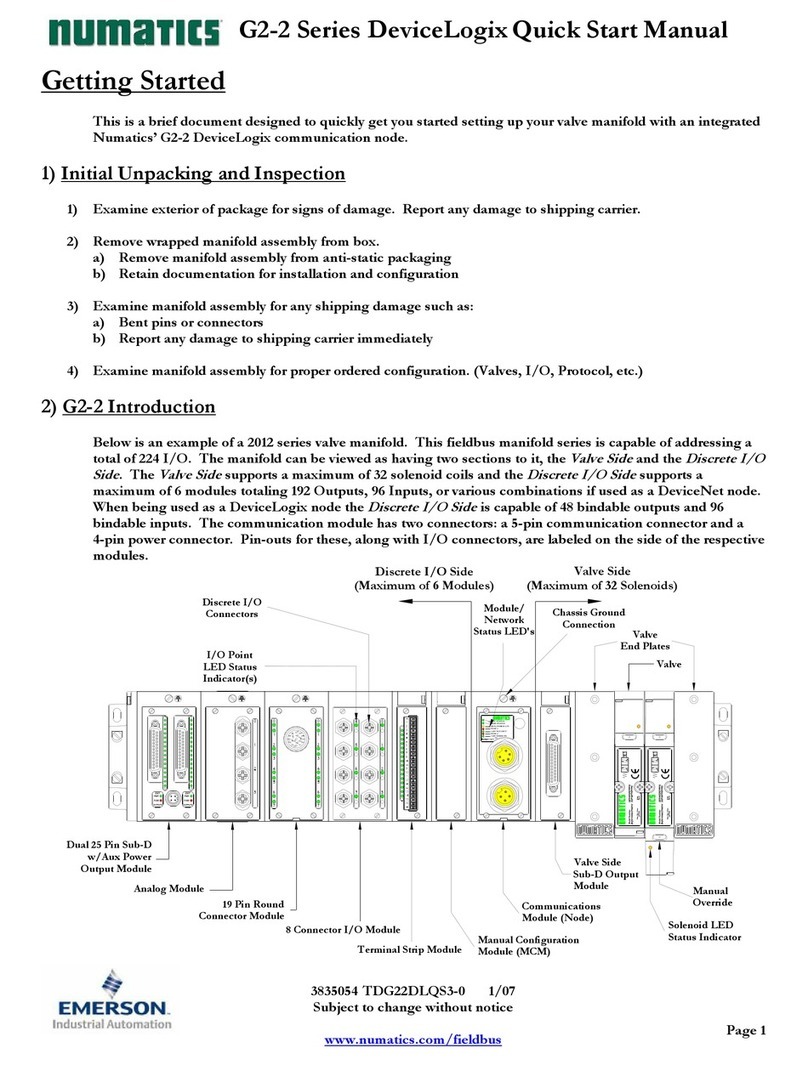
2
VCIOM-13643-EN © 2019, 2022 Emerson Electric Co. All rights reserved 01/22. Cash Valve is a mark owned by one of the companies in the Emerson Automation
Solutions business unit of Emerson Electric Co. The Emerson logo is a trademark and service mark of Emerson Electric Co. All other marks are the property of their
prospective owners.
The contents of this publication are presented for informational purposes only, and while every effort has been made to ensure their accuracy, they are not to be
construed as warranties or guarantees, express or implied, regarding the products or services described herein or their use or applicability. All sales are governed
by our terms and conditions, which are available upon request. We reserve the right to modify or improve the designs or specifications of such products at any time
without notice.
Emerson Electric Co. does not assume responsibility for the selection, use or maintenance of any product. Responsibility for proper selection, use and maintenance
of any Emerson Electric Co. product remains solely with the purchaser.
Emerson.com
OPERATIONS
1. Maintain a system operating pressure at
least 5 psig or 10% below the set pressure
of the valve, whichever is greater. Operating
too close to the valve set pressure will cause
seat leakage and will shorten the time
between valve maintenance.
2. Do not use the safety valve as a control valve
to regulate system operating pressure.
Excessive operation will cause the seat
to leak and will require more frequent
valve maintenance.
MAINTENANCE
Maintenance should be performed on a
regular basis. An initial inspection interval of
12 months is recommended. Depending on
the service conditions and the condition of the
valve, the inspection interval may be decreased
or increased. Use only Cash Valve parts for
repair. Depending on the local jurisdictional
requirements where the valve is installed,
repairs may have to be made by a repair facility
holding a VR stamp.
WARNING
Removal of the seal wires or any attempt to
adjust, repair or modify this product by non-VR
Certified personnel voids the product guarantee
and may cause serious damage to equipment,
personal injury, and death. Emerson is not liable
for any damage resulting from misuse or
misapplication of its products.
CASH VALVE™ TYPE C776 PRESSURE RELIEF VALVES FOR CRYOGENIC SERVICE
INSTALLATION AND OPERATING INSTRUCTIONS
INSTALLATION
Always wear proper safety equipment, including
safety glasses and ear protection.
1. Mount the valve in a vertical position so that
the valve body is self-draining. If a body drain
port is provided, make sure it is open when
required by the ASME code. Do not plug any
bonnet vent openings. The inlet piping should
be as short as possible, with no elbows,
and equal to or greater than the size of the
pressure relief valve inlet connection. This
will help to limit the inlet pressure drop to
3% or less when the valve is relieving.
2. When discharge piping is connected to valve
outlet, make sure it is self-draining if a body
drain port is not used. The valve should not
be connected to any discharge pipe that
contains pressure before the valve opens or
to any pipe where the pressure build-up is
greater than 10% of the set pressure when
the valve is open and relieving.
Discharge piping, other than a short tailpipe,
must be supported.
3. For threaded valves, to prevent sealing
compound from entering and damaging the
valve, apply a small amount of pipe thread
sealing compound to external threads only.
Do not put any sealing compound on the first
thread or on any internal threads. To do so
may cause the sealing compound to enter
the valve and cause seat leakage.
Do not use the valve body or bonnet for
installing the valve in threaded connections.
Use the wrench flats provided to tighten the
valve to the connecting pipe. Torque valve
enough to ensure a pressure-tight seal
and do not overtighten. To do so may cause
valve leakage.
4. Do not paint, lubricate or allow contaminates
to enter or cover the interior or any working
parts of the valve.
